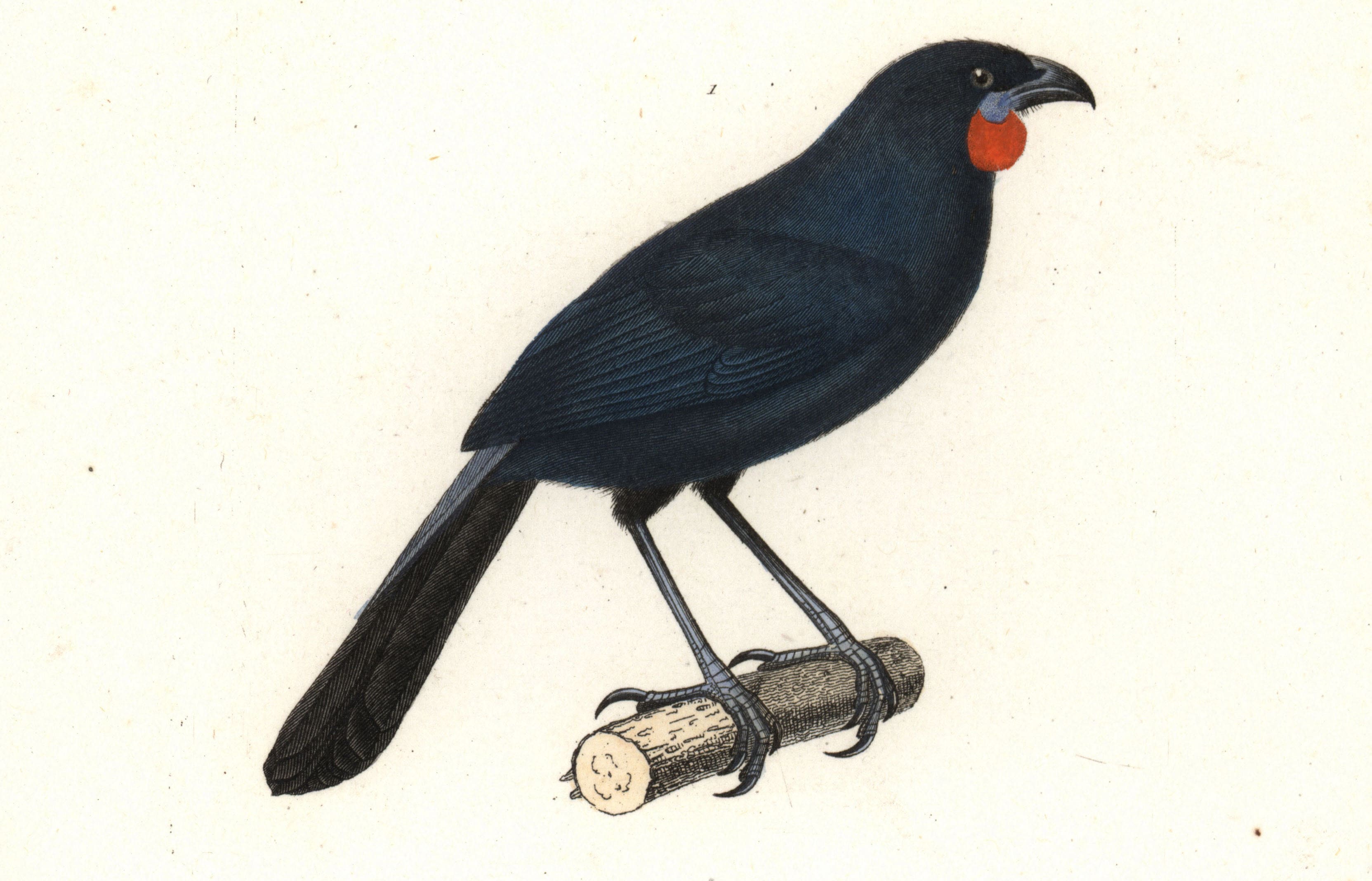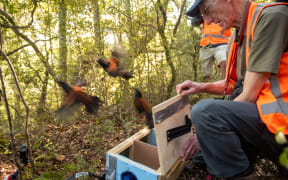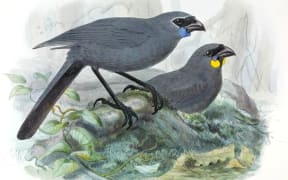A recording from the Heaphy Track in Kahurangi National Park is being analysed to determine if it is the South Island kōkako.

Illustration of the South Island kōkako, which is now assumed to be extinct. Photo: Florilegius/ Leemage via AFP
The last confirmed sighting of the South Island kōkako, now assumed to be extinct, was in 1967.
South Island Kōkako Charitable Trust general manager Inger Perkins told Morning Report a researcher at Victoria University, Professer Stephen Marsland, had let them know his programme filter had just picked up the song of the kōkako.
Perkins said there were three people on the track, when they heard a distinct couple of soft long notes. Reminded of the North Island kōkako, which they had heard before, they stopped in their tracks and saw a bird of the "right size and colour" gliding away.
They managed to capture the last few notes before it went quiet, she said.
"We've been back there with some volunteers and they've played back some other sounds there which we think are the kāka, and the kāka responded.
"We know the kāka respond to local sounds they make, and they responded to our previous recording but not this one.
"So we think this is very different and we think it's very likely to be the kōkako."
While it may be tricky to pin it down to one bird because others such as tūī and kāka mimick the call of the kōkako, Perkins sees some light with this particular recording.
"[The South Island kōkako bird call is] pretty much the same as the North Island kōkako, but we're looking at some slight variations through Professor Marsland's project so that we can add to that analysis.
"Even when we're hearing the kāka make a flute-y noise, in amongst the chattery squawky sounds, they might mix it in with the other sounds, whereas this particular note [on the recording] it's just on its own.
"The same with the tūī, they might have their chirpy sounds and their chattering and their squeaky sounds and their harsher sounds and perhaps a soft note in between, but not usually just that soft note on its own and also the melancholic nature of it ... seems to be indicative of a kōkako."
Now the Trust is hoping to seek some visual proof of the elusive bird.





